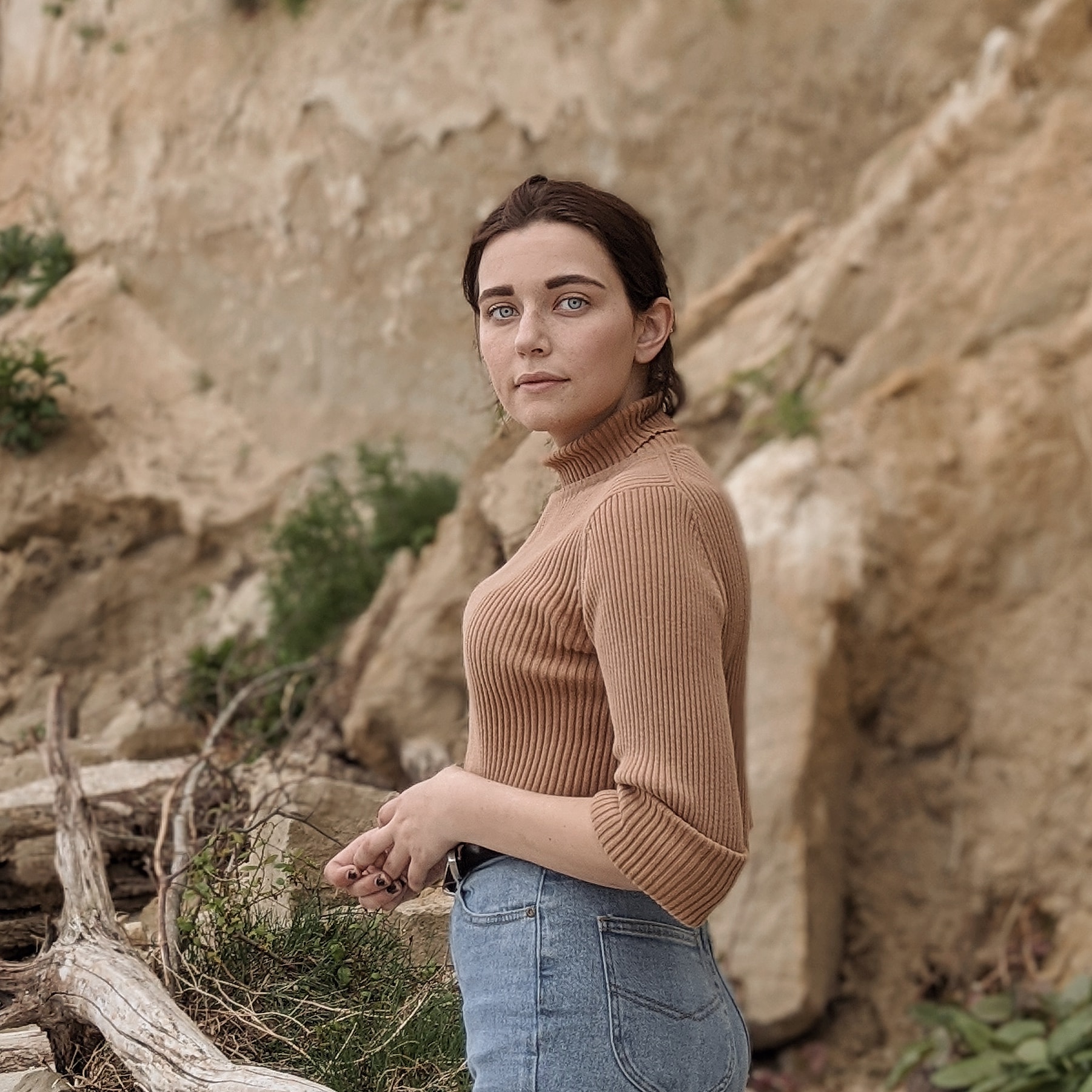DIY Clay Candle Holder
- Christy Kato

- Jun 13, 2020
- 3 min read
So one of the only issues that has arose while thrifting candles, is that some candlesticks are too big (or too small) for the candle holders that I'm able to find thrifting. There's a pretty simple trick around this...

Materials:
Oven-bake clay
Acrylic paint
A spoon
A small, teaspoon if you have one
Paint brushes
A cookie sheet (to bake your piece on)
Optional: Glaze
1. Knead, rock, and roll.

The clay typically needs to be broken in at first. You can knead it, push and pull it, smush it, or however you feel works for you. You'll want to continue working the clay until it's a Play-Doh consistency.

For the same size as my candle holder, which is about 4 inches in diameter, I rolled a ball that was about an inch and a half or so. Once you're finished working the clay, roll it into a sweet little ball.
2. Insert candle.

I found that by running the end of the candlestick in water, it prevents it from sticking too much to the clay! Simply push the candle into the ball of clay so that it's deep enough that the candle can stand on its own, but without pushing all the way through.
3. Blend out.

Run the spoon under water as well and begin pressing the clay down and out around the edges of the candle. Just be sure to keep about a centimetre of room around the edge of the candle so the base can maintain it's height!

After blending the base out with your spoon, using wet fingers, begin to blend out the base even more so. By having wet fingers, you'll be able to smooth over the marks and indentations that were left behind by the spoon.
4. Make a little snake friend.

Hehe, this is my favorite part. Take a bit more of clay, and after breaking it in, start by rolling it between your palms until it begins to form into a tube. Once there, place the clay down on the table or counter and begin to roll it back and forth. I recommend starting from the middle and working your way outwards towards each end. You'll want the little snake friend to be the same circumference as your candle holder, so it's good to wrap it around the edge of it to check.
5. Hatch those babies.

Hatching is the term for basically making close, parallel lines. So go ahead and hatch your snake friend and the edges of your candle holder as well!

It's okay if it's messy and goes off the edge a little bit, but I like to make sure I keep the lines a bit smaller. In the next step, you'll find that your snake friend won't be able to cover all of the hatch marks if they're too long.
6. Connect!

Before you connect the candle holder and little snake friend, be sure to dab a bit of water on all of the hatch marks- this helps connect the pieces! Go ahead and line up the hatch marks as best as you can!
7. Blend again.

I found that the normal table spoon that I was using initially to blend wouldn't really work for this step- it kept scratching up the base of the holder. So! I used a small teaspoon instead as well as my fingers (and if you don't have a teaspoon, your fingers will work just fine!) Just be sure to add a touch of water- this will really help you blend the little snake friend down into the base and smooth over the seams. Be sure to blend the outside edges of the holder as well!
8. Bake!
From here, you're clear to bake! Follow the instructions that came with your oven bake clay. You may want to use a cookie sheet that you only use aluminum foil on, or possibly cover it in baking parchment first as the clay piece will stick a bit to the cookie sheet.
9. Paint!

I don't really need to explain this, do I? Just wait until the clay piece is cool and paint away, my friends!

I did a fun little eye pattern on mine! Even though I'm not the best with clay or painting, I love the organic, handmade look of this! I always recommend doing simple little patterns on your pieces instead of more complicated or ornate patterns. But it's all up to you! One last tip though...
10. Go out, guns a-glazing.

I used Sculpey glass glaze (as well as Sculpey oven-bake clay) and this stuff is actual magic! The acrylic paint already has a bit of a sheen to it, but whenever I coat my pieces in this bad boy (especially the white ones) they s h i m m e r like a babe in a pool. I know you might get as excited as I do about it, but take your time! Do thin coats. The clay usually only needs one, maybe two coats anyway!




Comments